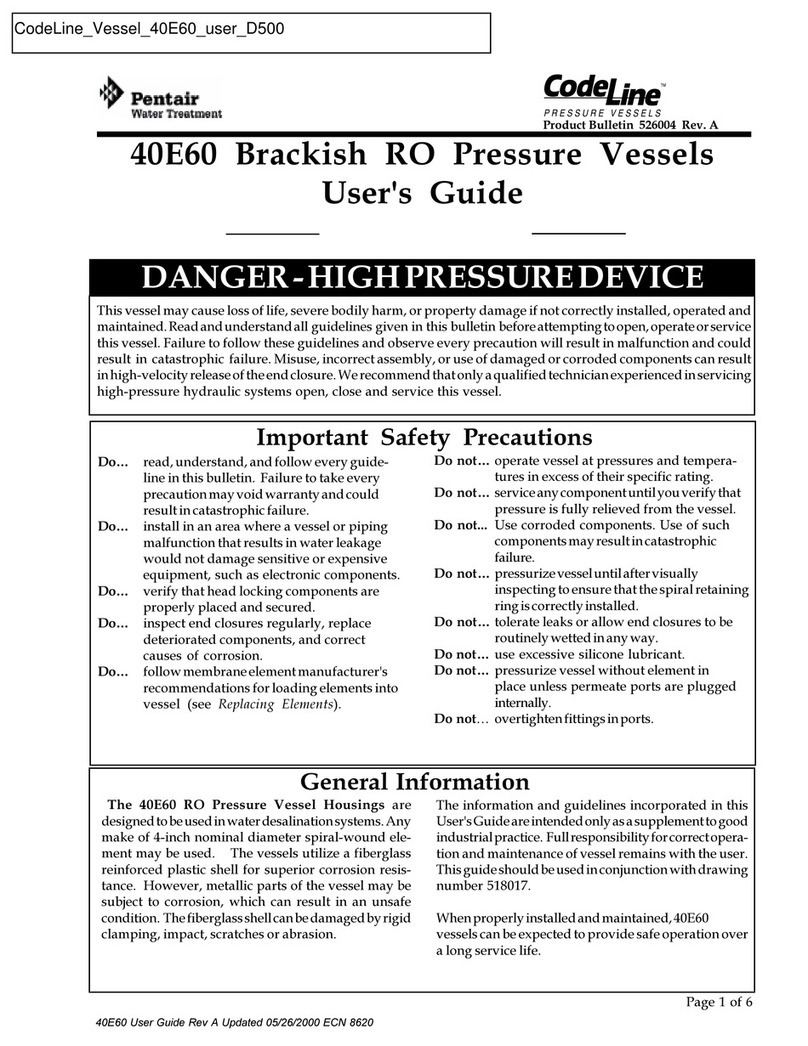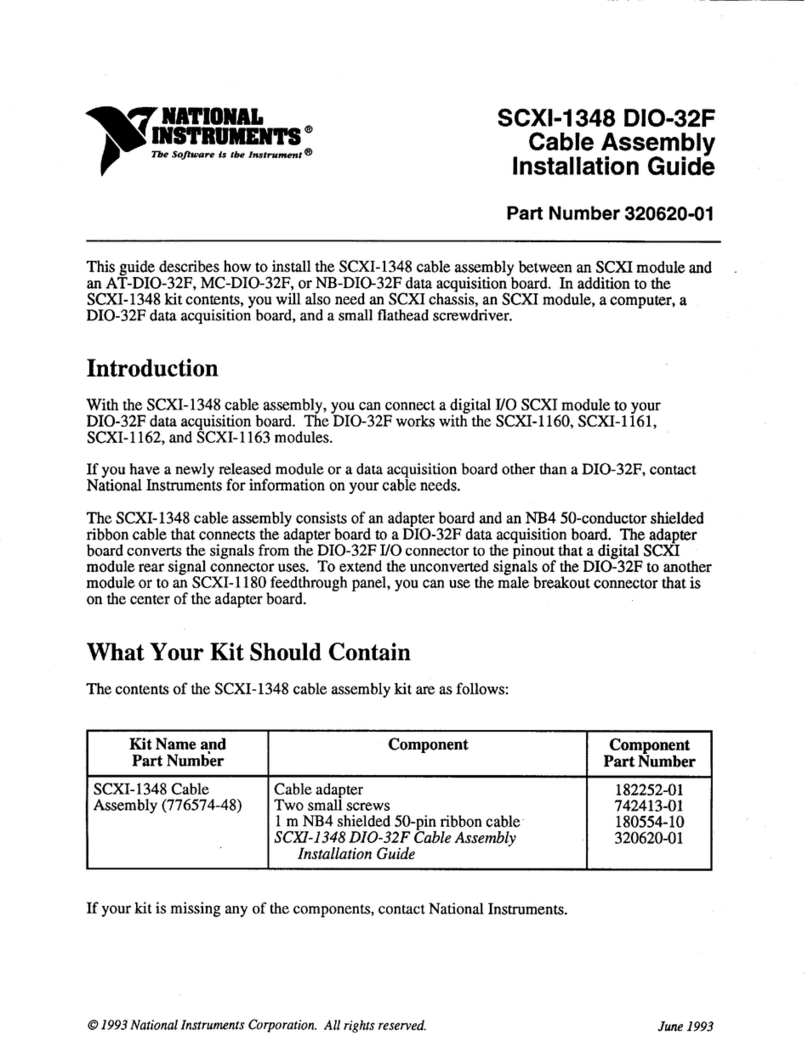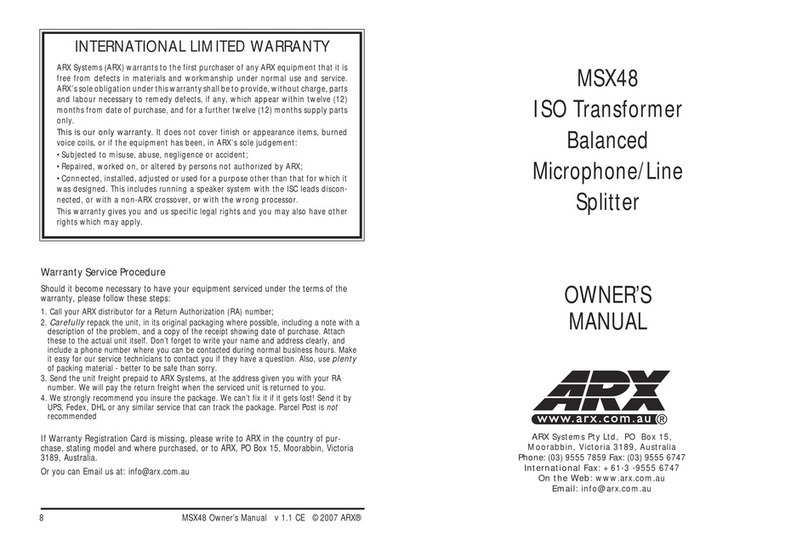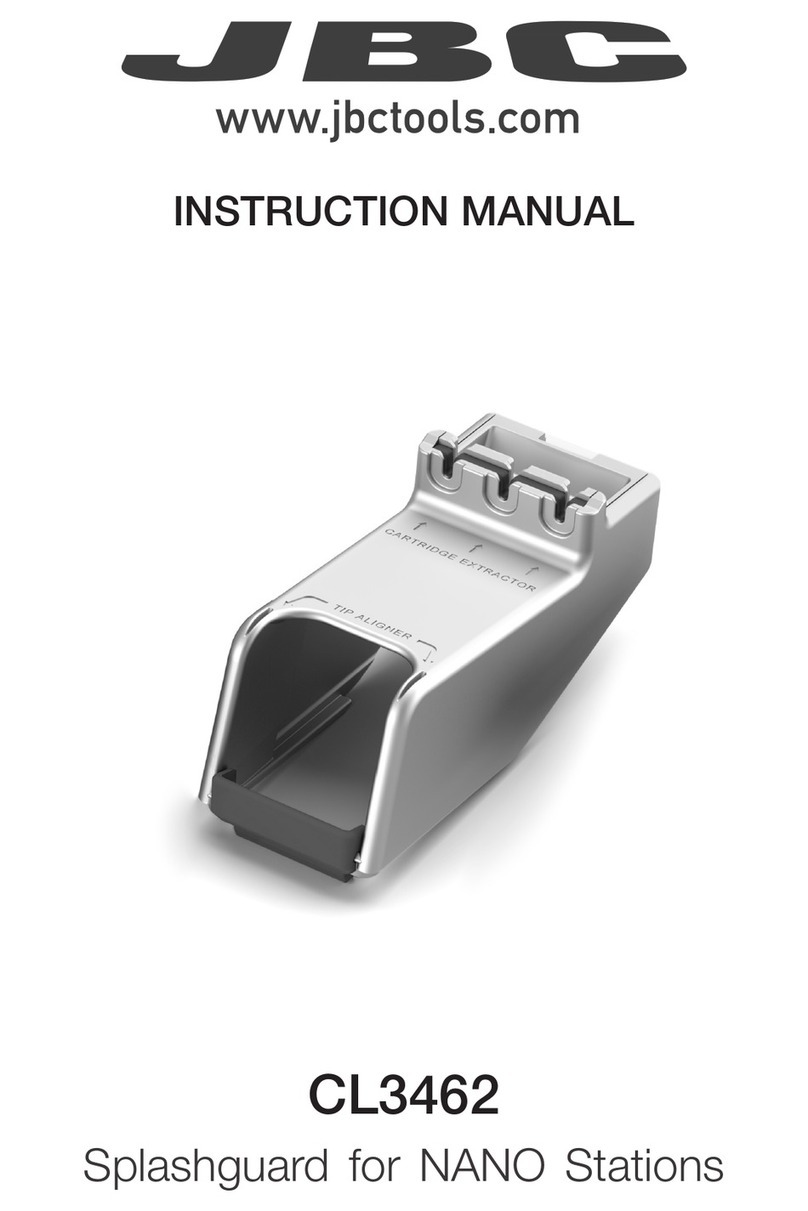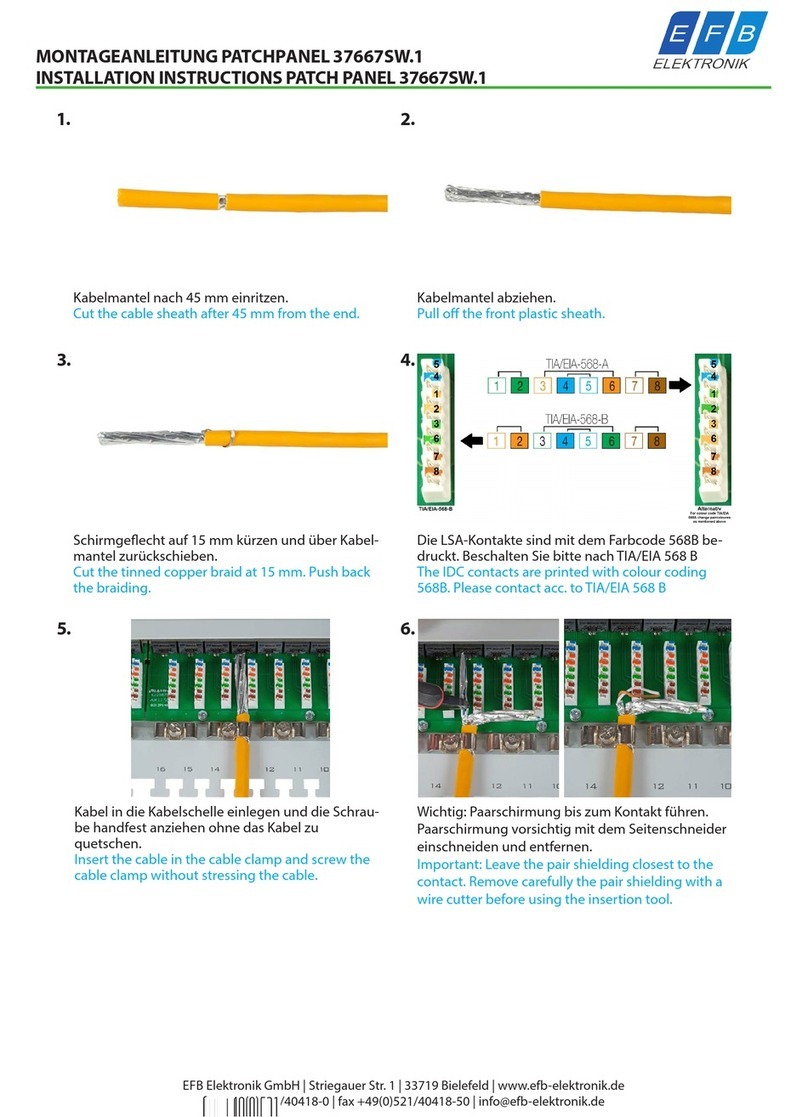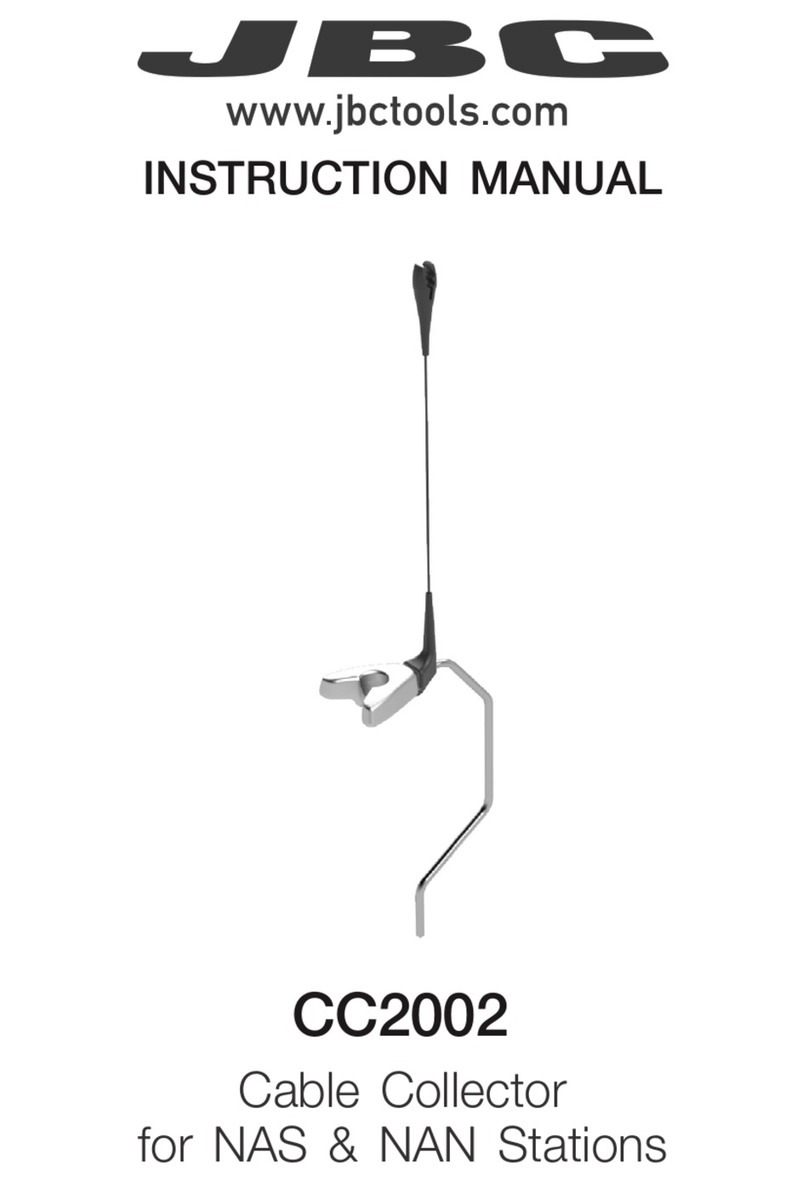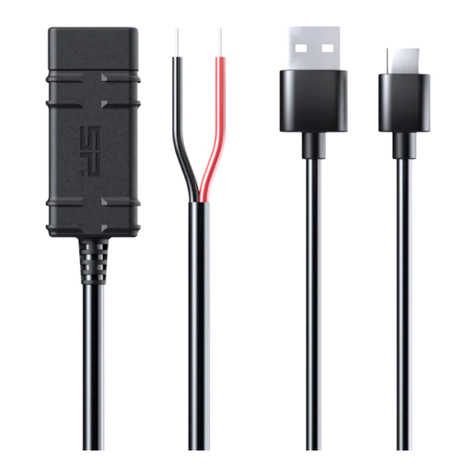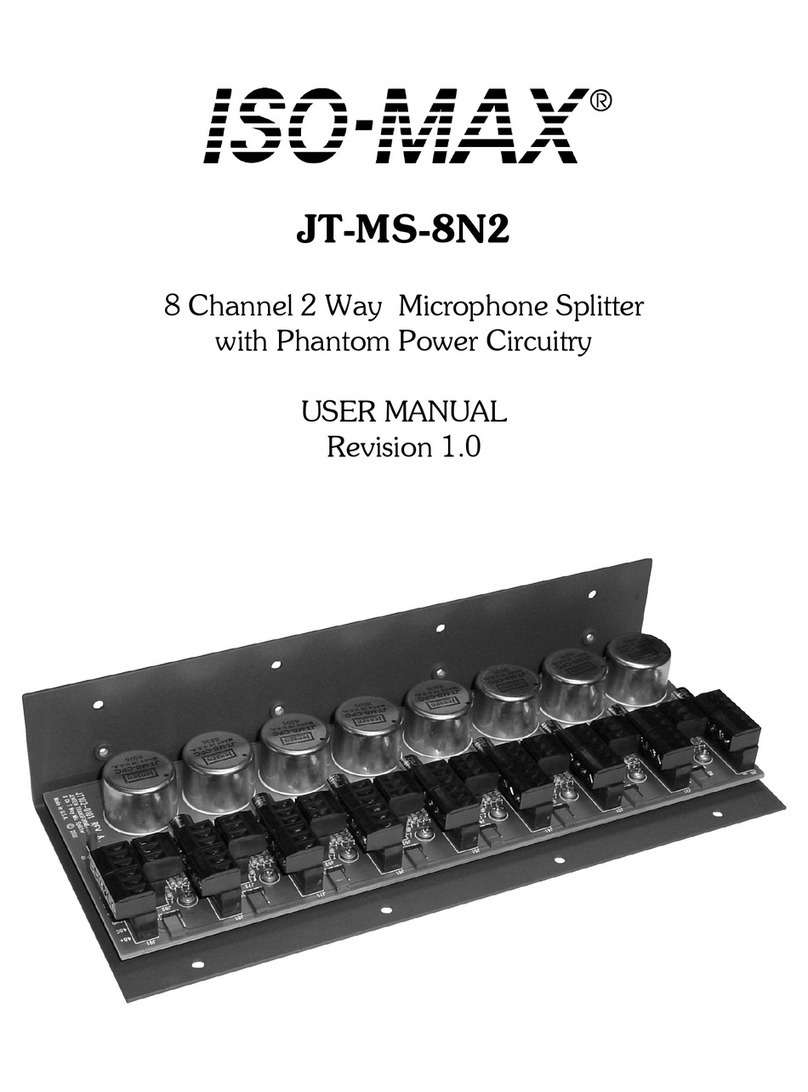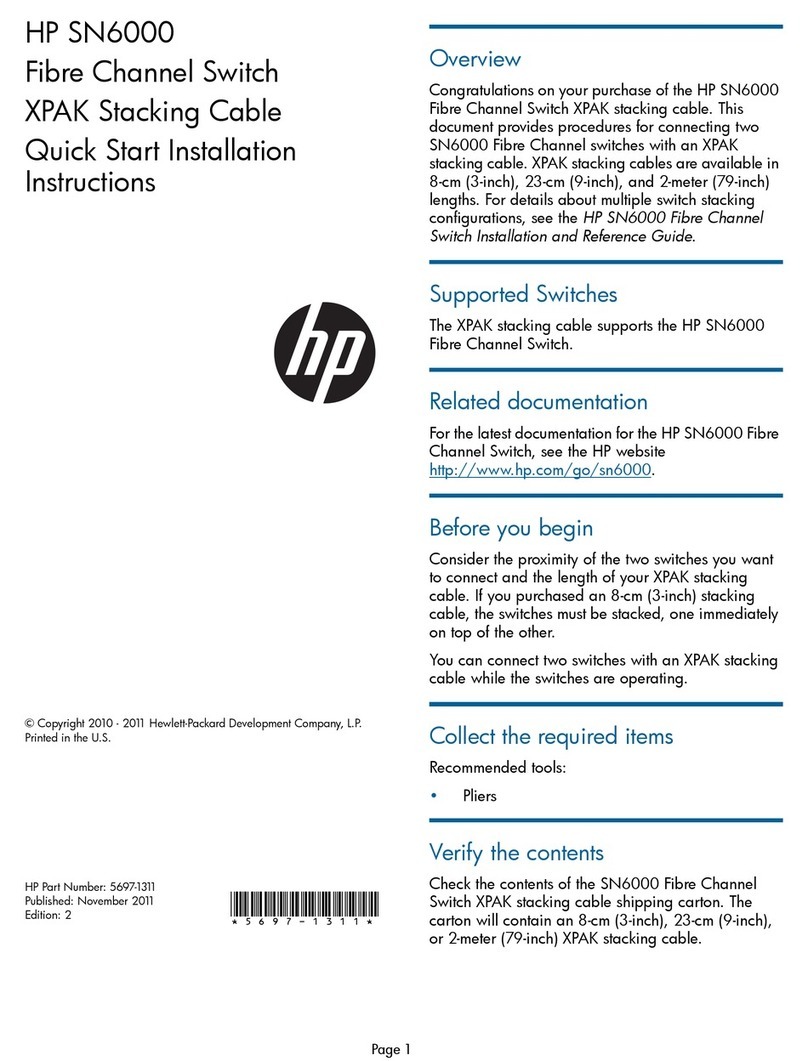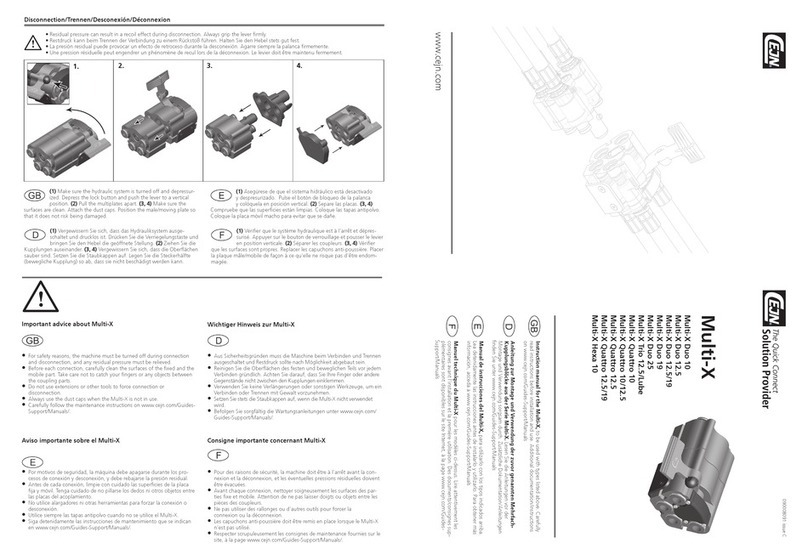Elastimold 164FTV Manual

IS---0377
IS---164FTV
January 2010
Page 1 of 4
Installation & Operating Instructions
164FTV
FEED-- THRU/GROUNDING DEVICE
CONTENTS: Feed---thru Body Complete with Mounting Hardware, Lubricant (DO NOT SUBSTITUTE), Operating Instructions.
IMPORTANT: Read these instructions and the Loadbreak Elbow Operating Instructions (IS-- 167/168LR,
Pages 3-- 4) COMPLETELY before operating connectors.
The feed--thru can be used for the following functions: A) A junction point, B) A grounding point. To use the feed--thru as a
junction point, follow steps 1 to 7. To use the feed--thru as a grounding point, follow steps 1 to 5 and 8 to 9. A yellow band
provides indication of full elbow seating. This product is identified by a yellow ID washer attached to the eyebolt.
DANGER
All apparatus must be de--energized during installation
or removal of part(s) except for test point caps and
indicators that can be installed and operated
energized.
After installation loadbreak products can be operated
energized per operating instructions. All deadbreak
connectors must be de--energized before operating.
All apparatus must be installed and operated in
accordance with individual user, local, and national
work rules. These instructions do not attempt to
provide for every possible contingency.
Do not touch or move energized products.
“Loadbreak connectors must be operated with a full
insulated “hotstick” type live-- line tool.” Consult the
company’s safe work practices for the required
live--line tool length.
Excess distortion of the assembled product may result
in its failure.
Inspect parts for damage, rating and compatibility with
mating parts.
This product should be installed only by competent
personnel trained in good safety practices involving
high voltage electrical equipment. These instructions
are not intended as a substitute for adequate training or
experience in such safety practices.
Failure to follow these instructions will result in
damage to the product and serious or fatal injury.
If this product is supplied with a protective shipping
cover(s), remove this shipping cover(s) and replace
with the appropriate HV insulated cap(s) or
connector(s) before submerging or energizing the
circuit.
FOR MORE INFORMATION ON PARTS, INSTALLATION RATINGS AND COMPATIBILITY, CALL THE NEAREST ELASTIMOLD OFFICE.
IMPORTANT
1. Check contents of package to ensure they are complete
and undamaged.
2. Check all components to ensure proper fit with cable
and/or mating products.
3. Read entire installation instructions before starting.
4. Have all required tools at hand and maintain cleanliness
throughout the procedure.
STEP 1
Bracket Grounding
Insert ground lead into the grounding lug provided on the
mounting hardware and tighten lug. Ground lead should be
equivalent to No. 14 copper wire or greater. Connect the
opposite end of the ground lead to ground, leaving enough
slack to operate with a hotstick.
IS---0377
IS---164FTV
January 2010
Printed in U.S.A.
8155 T&B Boulevard, Memphis, Tennessee
38125 (800) 888--0211 Fax: (800) 888--0690
To Ground
Protective
Covers
No. 14 Copper Wire Ground Lug
Yellow ID Washer

IS---0377
January 2010
Page 2 of 4
STEP 2
Remove the protective covers from the bushings of the
feed--thru.
WARNING: PROTECTIVE COVERS MUST NOT BE ON
THE BUSHINGS OF THE FEED--THRU WHEN THE
FEED--THRU IS BEING USED. When the feed--thru is not
in use, the protective covers should be placed on the
bushings of the feed--thru to protect them from dirt and other
contaminants.
Clean the bushing surfaces and lubricate them with the
lubricant supplied. DO NOT SUBSTITUTE. Other lubricants
may be harmful to this product and its mating product(s).
Clean &
Lubricate
Remove
Protective Covers
STEP 3
Attach feed--thru eye firmly to hotstick. Eye
Hotstick
STEP 4
1. Using a hotstick, slide feed--thru onto parking stand.
Unlock hotstick and back off, to allow space for eyebolt
to be tightened. Tighten eyebolt by rotating
hotstick clockwise until snug. DO NOT OVERTIGHTEN.
Release hotstick.
2. Position the ground lead near the bracket so it does
not come in contact with the bushing interfaces or
mating devices.
F
R
O
N
T
V
I
E
W
Parking
Strand
Parking
Stand
SIDE VIEW
Eye
Hotstick

IS---0377
January 2010
Page 3 of 4
STEP 5
Remove one loadbreak elbow from its apparatus loadbreak bushing following the applicable loadbreak operating instructions
(IS--167/168LR, pages 3--4). Using a hotstick, firmly attached to the elbow, insert the probe tip into one feed--thru until the first
slight resistance is felt. Immediately push the elbow home with a fast, firm straight motion which will engage the internal lock on
the mating interfaces.
Hotstick
Elbow
FOR JUNCTION POINT APPLICATION FOLLOW STEPS 6 AND 7
STEP 6
Remove second loadbreak elbow, following the applicable loadbreak operating instructions (IS--167/168LR, pages 3--4).
Using a hotstick, firmly attached to the elbow, insert the probe tip into the remaining feed--thru until the first slight resistance is
felt. Immediately push the elbow home with a fast, firm straight motion which will engage the internal lock on the mating
interfaces.
STEP 7
When it is desired to re--connect the elbow(s) to the apparatus bushing(s), first make certain no faults exist on the system. To
return the loadbreak elbow to the apparatus bushing, reverse the operational sequence, following the applicable
loadbreak--loadmake operating instructions.

IS---0377
January 2010
Page 4 of 4
FOR GROUNDING POINT APPLICATION FOLLOW STEPS 8 TO 9
IMPORTANT: DO NOT INSERT GROUNDING ELBOW INTO FEED--THRU UNLESS CIRCUIT HAS BEEN TESTED
AND SHOWN TO BE “DE--ENERGIZED”.
STEP 8
Ensure that the system is de--energized with either of the following procedures.
1. ELBOW TEST POINT
a. Remove test point cap with a hotstick. When removing cap, PEEL OFF AT AN ANGLE rather than pulling directly in
line with the test point assembly.
b. WARNING: THE VOLTAGE TEST POINT IS A CAPACITANCE DEVICE, IT IS NOT DIRECTLY CONNECTED TO
THE CONDUCTOR. Do not use conventional voltage measuring equipment. Follow the manufacturer’s directions for the
meter that is used. Test with a suitable sensing device, made for use with separable connectors manufactured with
capacitive test points, to determine if cable is energized. Contamination, moisture, dirt, etc. around the test point or use of
the wrong measuring equipment can provide a false “no voltage” indication on an energized elbow. To prevent serious or
fatal injury treat the elbow as energized until the “no voltage” test point indication is confirmed by other means.
c. After voltage detection has been made, clean and lubricate the inside surface of the cap with silicone grease and replace it
on the test point.
2. DIRECT TEST
Remove existing elbow or insulated cap from the bushing with a hotstick following the applicable loadbreak operating
instructions (IS--167/168LR). Firmly tighten a hotstick to the 370TR test rod operating eye. Insert the test rod into the
bushing. Using a meter capable of DIRECT READING the system voltage, check thetest rod disc for voltage. Remove test rod.
The hotstick eye and disc of the test rod are not insulated; be careful to keep them clear from ground until tested “de--energized”.
IMPORTANT: If voltage is indicated by either of the two preceding procedures, do not proceed without de--energizing
the system.
STEP 9
Install ground elbow into the second plug of the feed--thru,
following the grounding elbow operating instructions
(IS--160/370GLR, steps B thru D).
STEP 10
Complete assembly of an insulated cap or elbow is indicated
by no portion of the yellow band being visible when viewed
from the side
Hotstick
370TR
Test Rod
Test Rod
Disc
Operating Eye
2.
Table of contents
Other Elastimold Cables And Connectors manuals


